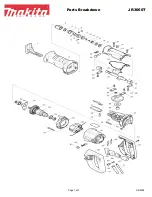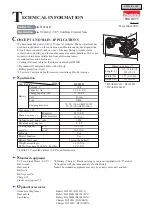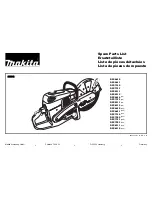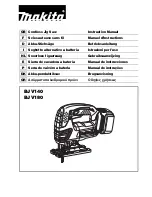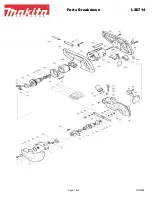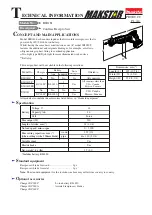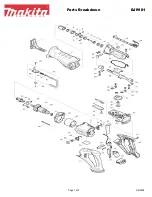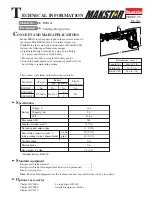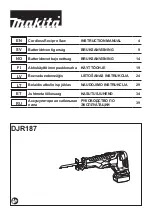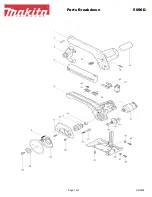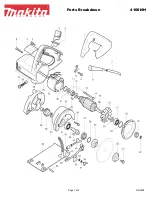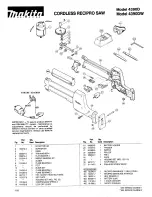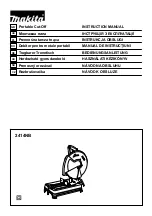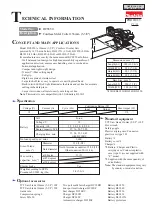
16
???
GB
17
GB
???
The tool must be used only for its prescribed
purpose. Any use other than those mentioned
in this Manual will be considered a case of
misuse. The user and not the manufacturer shall
be liable for any damage or injury resulting from
such cases of misuse.
To use this tool properly, you must observe the
safety regulations, the assembly instructions
and the operating instructions to be found in this
Manual. All persons who use and service the
machine have to be acquainted with this Manual
and must be informed about its potential
hazards. Children and disabled people must
not use this tool. Children should be supervised
at all times if they are in the area in which the
tool is being used. It is also imperative that you
observe the accident prevention regulations in
force in your area. The same applies for general
rules of occupational health and safety.
The manufacturer shall not be liable for any
changes made to the tool nor for any damage
resulting from such changes.
Even when the tool is used as prescribed it is
not possible to eliminate all residual risk factors.
The following hazards may arise in connection
with the tool’s construction and design:
• Damage to hearing if effective hearing
protection is not worn.
• Always remove the plug from the mains
socket before making any adjustments or
maintenance, including changing the blades
and adjusting the cut depth.
• Contact with the blades.
• Reaching into the housing while the tool is
running will get you in contact with the blade.
• Kickback of work piece and parts of
work piece.
• Blade fracture.
• Catapulting of faulty pieces from the blade.
EXTENSION CORDS
• Replace damaged cords immediately.
Use of damaged cords can shock,
burn or electrocute.
• If an extension cord is necessary, a cord with
adequate size conductors should be used
to prevent excessive voltage drop, loss of
power or overheating. The table shows the
correct size to use, depending on cord length
and nameplate amperage rating of tool. If in
doubt, use the next heavier gauge. Always
use U.L. and CSA listed extension cords.
Accessories
The Haussmann TDB340 planer is supplied with
the following accessories as standard:
• Parallel Fence
• Blade Wrench
• Spare Drive Belt
• Vacuum Adapter/Chip Flow Guide
• Dust Bag
• Kitbox
Unpacking
Due to modern mass production techniques,
it is unlikely that your Haussmann Power Tool
is faulty or that a part is missing. If you find
anything wrong, do not operate the tool until the
parts have been replaced or the fault has been
rectified. Failure to do so could result in serious
personal injury.
RECOMMENDED SIZES OF
EXTENSION CORDS
Tool’s Volts Total length of cord in feet
Ampere Cord size in
rating A.W.G.(minimum
25ft 50ft 100ft 150ft
3–6 120V~ 18 16 16 14
6–8 120V~ 18 16 14 12
8–10 120V~ 18 16 14 12
10–12 120V~ 16 16 14 12
12–16 120V~ 14 12 - -
Assembly
The Haussmann Electric Planer is packed
fully assembled except for the dust extraction
adapter, dust bag and parallel fence.
Operation
The TDB340 3-Blade Planer has an innovative
design feature called Vertical Centre of Gravity
(VCG). It positions the weight of the motor
above the blade barrel enabling easier, smoother
planing and hence a better finish. Also, the
design allows the chips to flow freely out of the
rear section of the planer, unlike conventional
power planers where the chips tend to block
the outlet.
Removing or installing
planer blades
CAUTION:
Always ensure that the tool is
switched off and unplugged from the power
supply before installing or removing blades.
Your planer is fitted with reversible blades.
Blades can be reversed when blunt. After both
sides of the blades have been used they should
be discarded.
Note:
These blades cannot be re-sharpened.
Removing a planer blade
1. Using the supplied spanner (17), loosen the
three clamping screws (11).
2. Slide the planer blade (9) from the slot in the
blade barrel (10) in which it is retained.
Installing a planer blade
1. Either turn over the planer blade (9) or replace
it if required.
2. Slide the good blade face up into the blade
support block of the blade barrel (10).
Note:
The ridge along the blade should be
on the blade face on the opposite side to the
clamping screws (11).
3. Tighten the clamping screws (11), ensuring
they are tightened evenly.
4. Repeat for the two remaining blades.
Note:
Always change all three blades at the
same time, otherwise the resulting imbalance
can cause vibration and shorten the blade
and tool life.
CAUTION:
When installing blades, first clean
out all chips or foreign matter adhering to the
blade barrel (10) and the blades themselves.
Use blades of the same dimensions and weight,
or the barrel will oscillate and vibrate causing
poor planing action and possibly a machine
breakdown. Tighten the clamping screws
(11) carefully when attaching the blades to
the planer. A loose clamping screw could be
extremely dangerous. Regularly check to see
they are tightened securely.
Note:
Your planing surface will end up
rough and uneven unless the blades are
set properly and securely. The blades must
be mounted so that the cutting edge is
absolutely level, i.e. Parallel to the surface of
the rear base (13). The examples below show
proper and improper settings:
OPERATING INSTRUCTIONS
ADDITIONAL SAFETY RULES FOR
ELECTRIC PLANER
Summary of Contents for TDB340
Page 12: ...22 GB 23 GB ...
Page 13: ...Haussmann_K ai K ...














